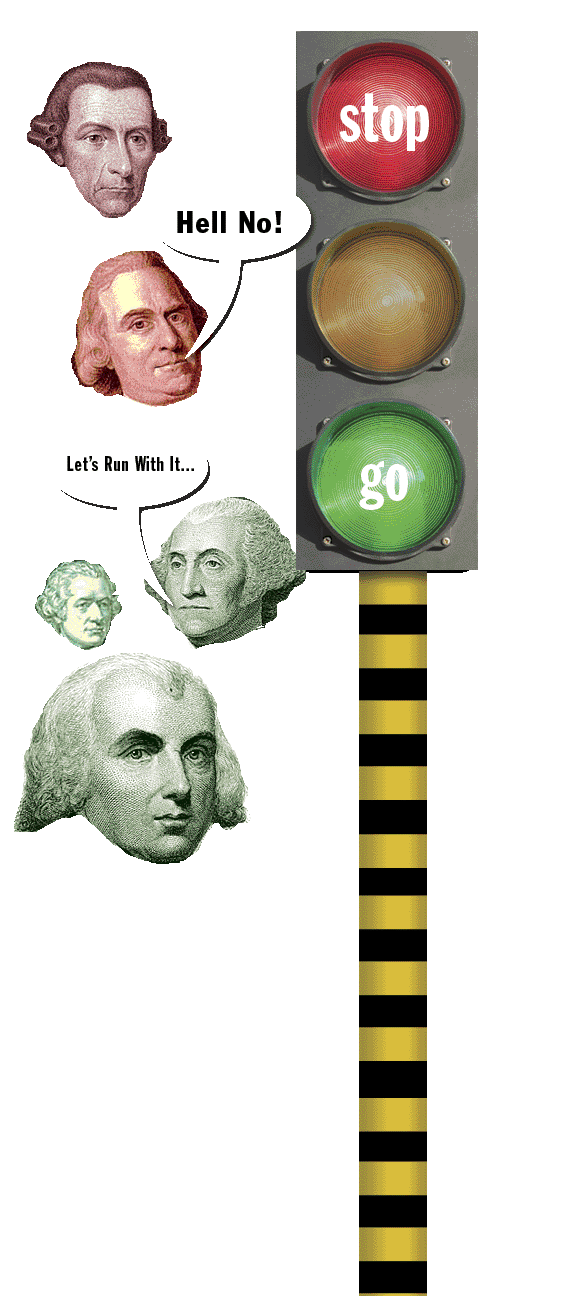
A little background
The Bill of Rights are actually the first ten amendments to the U.S. Constitution. And if you're not clear on the Constitution... well that is the Grand-Daddy of governing documents.
The Bill of Rights are actually the first ten amendments to the U.S. Constitution. And if you're not clear on the Constitution... well that is the Grand-Daddy of governing documents.
In 1787, our Founding Fathers (face it ladies &mdash it's all guys. It's called HIS-tory for a reason. Aside from a little flag making, you should assume we were all polishing pewter or fluffing fancy wigs) drafted up the Constitution behind closed doors. It was signed on September 17th, but it was not approved by all nine necessary states until 1788. (For a hip-hop take on the Founding Fathers check out this JibJab Rap.
You have to register, but it's worth it.)
At this point things get a bit tense. Folks started to splinter into two groups
The Federalists and The Anti-Federalists. The Anti-Federalists started sounding off about how the Constitution did not go far enough in protecting the citizens, while the Federalists tried to educate folks about the safeguards against the abuse of power, basically saying &mdash
“It’s all good people, don’t worry”.
If you think a little bit about that fact that most all of these dudes had experienced some pretty heavy-handed sovereigns &mdash bossy kings and queens telling the little people what to do &mdash well you can understand their concerns. No one wants to be unjustly persecuted. Turns out a little taste of tyranny goes a long way.
On September 25, 1789 the First Congress of the United States proposed amending the Constitution to more specifically spell out the rights of the individual citizens. Now you should be asking - what exactly are the amendments? »
